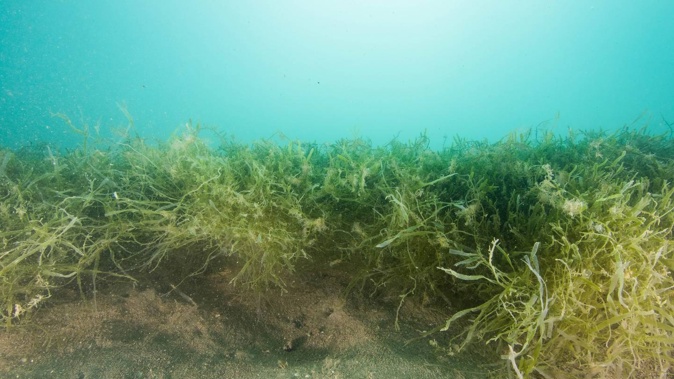
Northland is leading the way in New Zealand as the first region to focus solely on invasive seaweed caulerpa’s eradication from the outset, rather than simply containment.
Northland Regional Council deputy chairman Jack Craw, who has more than 40 years in biosecurity, said caulerpa was the worst pest he had ever seen.
He said eradicating the seaweed from the Bay of Islands could take as long as a decade and eradication was the sole goal.
The regional council push comes despite the lack of international success in caulerpa eradication.
Ministry of Primary Industry’s Biosecurity New Zealand deputy director-general Stuart Anderson said the global inability to eradicate exotic caulerpa was the hard reality that has had to be faced. This was why Biosecurity New Zealand had so far focused on slowing the spread of the seaweed.
Exotic caulerpa was first found in New Zealand on Aotea Great Barrier Island and Ahuahu (Great Mercury Island) in 2021. It was found in the Bay of Islands on May 3 this year.
Craw said the regional council accepted eradication would be extremely costly and complicated, but the downstream economic, cultural and social impacts of not trying were unacceptable and catastrophic for the marine environment.
“We want nothing short of total eradication of this seaweed from our waters,” he said.
The initial step in this began on June 12 with the New Zealand-first trial of combined pool chlorine tablets and heavy mats.
Craw said the council was now in conversation with the MPI on getting permits to start eradication work inside the Bay of Islands’ new biosecurity Controlled Area Notice (CAN).
Fishing and anchoring across 1075ha of Bay of Islands moana has been banned by the Government since June 12 when the CAN and a mana whenua rāhui was put in place.
Craw said the Bay of Islands CAN was a good start, but it was not enough.
He said New Zealand had become the first country in the world to eradicate the cattle disease mycoplasma bovis. There was no reason that could not be the case for caulerpa too.
Caulerpa at Omakiwi Cove. Photo / Susan Botting
Anderson said there was no established method for eradicating exotic caulerpa in the world, particularly for doing so with infestations of New Zealand’s scale.
He said eradicating mycoplasma bovis had cost the country $870 million over 10 years. The dairy and beef industries had contributed 32 per cent of the eradication cost.
“If eradication of caulerpa became viable, then councils and others might be expected to contribute to costs as part of a joint approach,” Anderson said.
Craw labelled government caulerpa efforts so far as defeatist.
“Biosecurity New Zealand has to date brought a defeatist attitude to this new threat, deeming eradication impossible with the tools available — but without investing in developing and trialling new tools,” he said.
Anderson disagreed.
“It is not defeatist to recognise that this is a difficult pest and there are not straightforward answers to its removal,” he said.
Craw said the regional council was aiming for New Zealand-first suction dredging to be trialled inside the CAN. Other options included mats impregnated with copper and light treatment.
The council was urgently requesting MPI’s Biosecurity New Zealand and appropriate government ministers resourced a more ambitious response to eradicating “this extreme threat to our coastal waters, as a matter of priority”.
He said the Government needed to release funding for the caulerpa response and let local communities show what they could achieve.
“Our moana can’t afford for indecision around this and we see no valid reason to wait.”
The council wanted urgent funding to enable “a practical attempt at eradication which we believe together with mana whenua and our dedicated communities, we can take action on immediately”.
“We have the ability to remove caulerpa via a range of technologies,” Craw said.
■ Local Democracy Reporting is Public Interest Journalism funded through NZ On Air
Take your Radio, Podcasts and Music with you

/cloudfront-ap-southeast-2.images.arcpublishing.com/nzme/7WEKBA3M25AGND6PSY6336KO6A.JPG)








